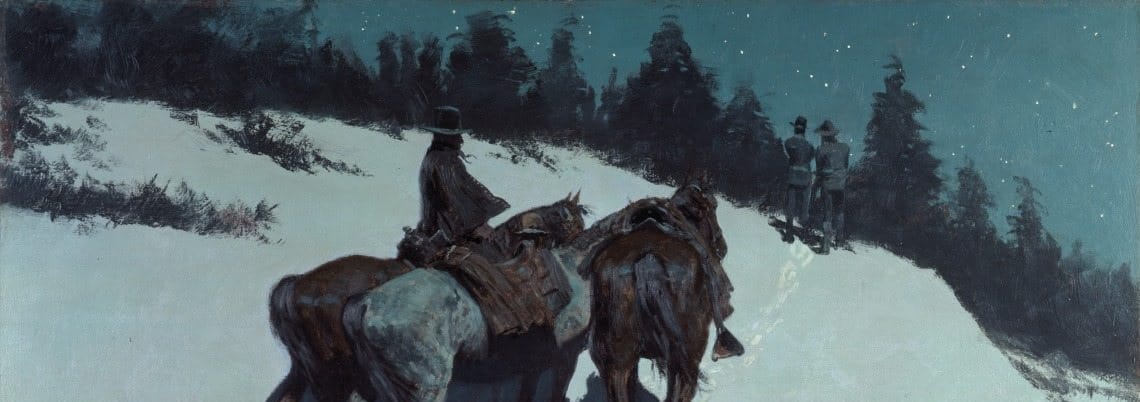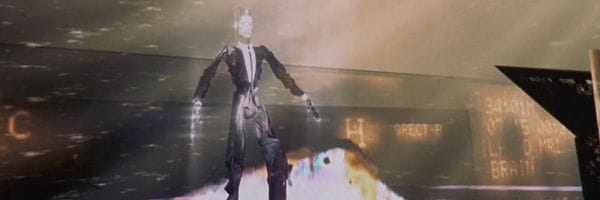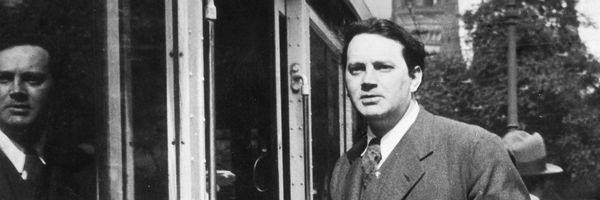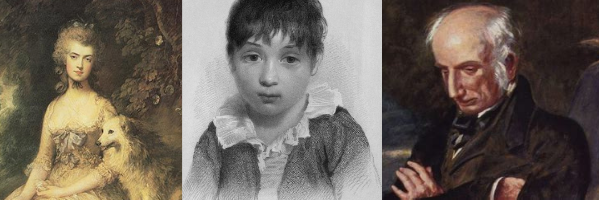Week 5: The Hyperconnected Lyric

Poetry has reacted to the digital age in many ways. Next week, we will be looking at some generative poetry, one approach to crafting a fundamentally computer-based poem. Even for crafting something for print, there are practices such as Flarf, mining search results to produce outrageous texts. Alternatively, Mez Breeze devised "mezangelle" as a way of restructuring words and other typographical components, particularly with incorporating elements of programming language syntax. William Gibson's poem Agrippa (A Book of the Dead) self-destructed upon reading – with a physical book whose text was designed to rapidly fade when exposed to light, and a digital copy which was programmed to encrypt itself after being accessed once.
Our subject today is much more immediately open to more traditional approaches to reading. These are lyric poems, in regularly accessible English-speaking syntax, simply doing what lyric poems do: describe the thoughts and feelings of a single speaker. This is a common form of writing poetry, but not always done with this subject matter so simply. In other examples, language might be fragmented, technical details inserted, the single speaker expanded into a multiplicity – images of a speaker whose subjectivity or ability to communicate has been shattered by the chaos of our digital world. That is all worthwhile in its own way, but we will be looking at models for capturing in poetry a more typical experience of the 2010s hyperconnected world, an experiment in its own right.
Lyric poetry, tuned to a dead channel
Cathy Park Hong's 2013 Engine Empire excels in depicting a sequence of three boomtowns, places experiencing rapid growth. The first section of the book contains cowboy ballads set during western expansion of the United States, the second looks at industrialized China primarily through a sequence of prose poems, and the third imagines a near-future world of rapid expansion of digital technology and surveillance. In moving through these three moments, Hong displays strong understanding of both universals and also what makes each context distinct and uniquely worth exploring.
For our purposes, the third part is clearly the most relevant, but elements of surveillance and power develop across time. In the middle section's "Of Lucky Highrise Apartment 88's Courtyard or Epithalamion," a fried prawn vendor is noted to have "turned his surveillance camera toward the rising and setting sun." In the next poem, we discover, "Officials executed him after they watched the useless footage of a sun bobbing up and down for 100 days." Some other vendors approve of what he did, saying that the cameras take away business, but they quickly stop discussing their dissent. They, too, are being watched. The emerging presence of the cameras shapes how and where business takes place, and what people bring themselves to say. Just as the sunrises and sunsets are an aesthetic subversion of the market surveillance, this reduced capacity for verbal expression holds similar consequences. Each poem in "Adventures in Shangdu" is a little paragraph or two – a snapshot into part of the life in this boomtown. There are some recurring characters, but they appear scattered and unnamed. We can only piece together connections as readers, but we are then brought into the role of tracking people living under a surveillance state. This provides a model for the high-tech poems which follow.
The closing section, "The World Cloud" brings us into a world of cloud computing, through which the thoughts and feelings of our poetic subjects are captured. In the opening of his first novel, Neuromancer, William Gibson wrote, "The sky above the port was the color of television, tuned to a dead channel," referring to the black-and-white snowy static. Later in the novel, he describes "cyberspace" as "A consensual hallucination." Hong, accordingly, begins her first poem in this section with these lines:
Snow like pale cephalopods drifts down
as it melts into our lapels we are all connected
into a shared dream where we
don't need our heirloom
mouths.
The snow image and the sense of hallucination, or dreaming, are taken by Hong as foundational for imagining the hyperconnected world. The closing poem, "Fable of the Last Untouched Town" retroactively frames the section as the vision of one central speaker. In a town completely removed from the electric grid, smart snow appears like an invasive species, an "imperialist-plotted ice." When one laborer accidentally swallows some, "it caused him to hallucinate." The poem ends with the speaker intentionally swallowing some of the smart snow, and the line, "And this is what I saw." In consuming the smart snow – extending to nature "smart" technologies which can communicate with both us and machines – the speaker is suddenly tuned into the personal data which constructs the other poems. As in the opening passage quoted above, our mouths become an "heirloom" in this context, as we move to new forms of instantaneous communication. "Engines Within the Throne" explains most clearly this new smart world, in which "the search engine is inside us, / the world is our display." The poem ends with these two stanzas, broken apart to lend added emphasis to how alarming we might consider this:
now we have snow sensors
so you can go spelunking
in anyone's mind
let me borrow your child
thoughts, it's benign surveillance
I can burrow inside, find a cave
pool with rock-colored flounder,
and find you, half-transparent
with depression.
The suggestion "let me borrow your child thoughts" may be outrageous to some, but is clearly not in a general sense in a context where one's life, both present and early, is often shared so freely. Childhood memories and a capture of one's young face are regularly shared as a game on social media. The phrase "let me borrow your child" remains much more ominous, but is presented as almost interchangeable with the full statement. The snow, which we consume, in turn consumes whole towns and generations.
Two striking poems – "A Visitation" and "Who's Who" – replace the lyric "I" with the second-person "You." This is the "I" as expressed not directly by the subject but secondarily by the cloud, written as in the model of interactive fiction. Within the frame suggested by "Fable of the Last Untouched Town" as well, the "I" is perhaps still the laborer, plugging into the perspective of this woman, as is accounted of her: "You feel the smart snow monitoring you, / uploading your mind so anyone can access your content." Lyric poems generally are something of a similar uploading, but what is distinct here is that it is not just her thinking and feeling. Machine communication blends seamlessly into her perception. Information "booms" in a chosen celebrity voice. Later, "you hear a one-sided chat." Virtual chimes blur together with "a real chime" of someone ringing the doorbell of your physical home. The poem gives a glimpse of a life which is not terrible, but not under control, and a marriage which has seemingly collapsed into nothingness and now exists almost entirely in the background.
"Who's Who" reveals the husband to be a near-corpse, nails growing long, as he has receded almost entirely into some virtual world, described as being "on roam." You have only received one message from him since he left: "I am by a pond and a coyote is eating a frog. It's amazing." The message is impersonal, and the scene highly unremarkable. Hong presents a similar vision earlier in "Year of the Amateur," in which we (among "a monsoon of live-streams") "gather and watch an otter nibble / sweet urchin to a pulp. / We laugh softly." As Hong envisions it, online life attracts us with empty content, stuff fitting with what Sianne Ngai describes as our new aesthetic categories: zany, cute, and interesting. While we are distracted by this, however, we experience decay elsewhere, and are increasingly unable to handle it. Back in "Who's Who," you bite your hand out of anxiety as you receive the "98th auto reply" explaining that you cannot access your long-gone husband's password due to a Privacy Policy. You go to a park, and
You see a palm tree and it is carved up with little penis drawings.
You make a sound like tut-tut.
You enhance the park.
You fill in the balding grass and rub the offensive drawings
from the tree. You add coconuts.
You feel your insides are being squeezed out through a tiny hole
the size of a mosquito bite.
Hong's collection presents clear critiques, but what makes it most relevant to me as a prominent example is the minor ways Hong captures the experience of that negative world through her poetry. That mosquito bite image returns later in the poem as "you hear users chatting / over each other, which all blurs into a warring shadow of insects." This sort of experience of something like information overload is rarely expressed with such feeling in poetry. Hong has her frame and, in a couple poems, the second-person pronoun replacing the typical first, but she gives a distinct language to these sensations which are specifically crafted to break through that level of remove.
Lyric poetry, tuned to a dead girl's feed
Sally Wen Mao's 2019 Oculus focuses more intensely on the visual end of our contemporary media world. Her collection's history is, accordingly, the actress Anna May Wong, active through the early-to-mid 20th century, but imagined by Mao to have a much extended film career with the assistance of a time machine. An "oculus" was once an eye. This now largely obsolete usage has since been replaced by figurative language which builds on it. An "oculus" is a circular opening in architecture, the vantage point in photography, and the brand name of a prominent line of virtual reality headsets which was bought out by Facebook.
In the opening poem, "Ghost Story," the speaker (now the titular ghost) says, "When I lived, I wanted to be seen." This desire permeates the collection, as explored critically through poetry by Mao. In the book's notes, Mao writes that the first instance of the title poem "Oculus" "is based on the story of a nineteen-year-old girl in Shanghai who uploaded her suicide onto Instagram in 2014." The speaker here, though, is not a ghost, as in that first poem. The speaker is a stranger who has observed records of the girl and her death so much that the poem begins, "Before I wake, I peruse the dead girl's live / photo feed." The situation we are placed into is thus not actually browsing the feed, but the recreation of doing so in a dream. Unlike the girl, the photo feed is "live." The speaker's role in browsing this, however, is the thorough "peruse," made idle through her sleeping status and activity of searching through a personal photo feed. In giving imagery to this photo feed, Mao is drawn to snow as well:
a face
luminescent as snow. I can't bear the snow—
how it falls, swells over the bridges,
under my clothes, yet I can't be held
or beheld here
Here, the snow is a comparison to the appearance of a face, and a face on a screen in particular. The snow both burrows its way into our clothes and covers things over. The snow is just an image, though, and what is being prevented is real intimacy – being held or being beheld. Like the earlier ghost, the speaker here senses the desire to be seen, and understands the dead girl to have been awaiting this sort of fulfillment before her suicide.
As with the "live" photo feed, and its further afterlife in the speaker's dreams, Mao continues to show ways in which the rapid, wide-scale transmission of images can be haunting. The poem "No Resolution" is dedicated to the daughter of a man pushed onto the tracks of an oncoming train. The poem opens with cover of a magazine displaying the man's image, captured by waiting cameras like those in the market in Hong's poems. More cameras then await the daughter as she stands around during a press conference, attempting to hide inside her hoodie. As the story circulates in magazines and television, "in low-res, high-res," it is both "the story / of all of our lives" and "the story of none of our lives." In other poems, the actress Anna May Wong is taken culturally as a celebrity representative of all Chinese Americans, a fundamental absurdity not solved even by more careful consideration of accepted roles. Mao, across two sequences of poems, has Wong continue as a prominent face in film through to the present day. The continuity of the actress emphasizes a sense of minimal progress, which extends beyond film into the media worlds of the woman's father or online photo feeds. In the latter environment, each individual wants to be seen, but is obscured (such as by snow) into a generalized mass. The hypercommunication of the feeds, in Mao's vision, tend toward offering people up for hostile consumption.
Mao's response, through her poems here, is to flip the oculus around. In replacing photo feeds with poem sequences, she gives new imagery, context, and figurative connections to visual history. She also at several points depicts the images online as not passive, but supernatural. "Live Feed" presents a promise to hunt the reader after death. Mao re-imagines the offering up of a record of one's mistakes and the feeding of one's "limbs" to strangers as something of a trap. As we saw with the speaker in "Oculus," the information is not just bounced around to different machines. It also sticks with us offline, into our dreams, and re-framing those images as through poetry enables Mao to infuse those images with something more alarming to stick with her readers.
Lyric poetry, tuned into by the government
Charlotte Geater's 2020 poems for my FBI agent, lastly, offers a consistent look into a subject of surveillance. The speaker of these poems has fully internalized the idea that everything done or said electronically is (at least potentially) monitored. This broad sense is materialized through the creation of a singular imagined FBI agent who is assigned to the speaker. The speaker positions this figure as no longer a looming presence, but now an interlocutor.
In Hong's poems, we saw the idea of lending your child [thoughts]. In school systems now, growing surveillance is creating just this sort of dynamic. In an article for Education Week published the previous year, Benjamin Herold writes:
Sometimes students with a concern simply email themselves, with the expectation that algorithms will flag the message for adults, said Jessica Mays, an instructional technology specialist for Texas’s Temple Independent School District, another Gaggle client.
One student “opened a Google Doc, wrote down concerns about a boy in class acting strange, then typed every bad word they could think of,” Mays said. At the end of the note, the student apologized for the foul language, but wrote that they wanted to make sure the message tripped alarms.
In the opening poem of Geater's collection, her speaker is not just expecting this FBI agent being there reviewing her online content, she has grown fond of him. She sees him as "pretty cool" and has a whole imagined set of traits and habits for him as he goes about his busy life keeping up with all of her messages and viewing all of her selfies.
Like the ability to connect into other people's minds in Hong's poems, the speaker in "my FBI agent doesn't like to read" starts to see herself and her development of ideas at a remove, as through the FBI agent's eyes or sometimes as split between two screens. What was in 2013 imagined as actual connections between two people is now wholly internalized. The sheer possibility of hyperconnectivity has become so internalized that this subject lives always in anticipation of these possible connections. This is a version of interpellation as discussed by the philosopher Louis Althusser. The agent's imagined presence provides a central ideological role for the speaker, placed in parallel to religion:
if i type a poem instead of writing it out first
it feels closer to god, by which i mean
closer to you, watching me
and if i am not a problem, are you there?
The speaker worries about not being interesting enough to warrant this FBI surveillance. In the next poem, she goes through her Facebook ad data and reflects that it offers an incomplete version of her. As a sociable relationship – as is central to something like social media data – her constant online surveillance overrides terror by pressing on a desire to be seen (as in Mao) and to be understood. The impulse, then, is not to escape this system, but to feed it more data. Remember as well the Hong example: We see the critiques of the surveillance, but we still want to track down the different characters across the little poetic snapshots. As a progression from Oculus, it is not even just wanting to be seen while feeling we are not truly seen through our current media, it is wanting to be seen properly as data.
An imagined reader is nothing new, but what is new is that, to some extent, algorithms do function as an actual, constant reader. As we can see in the school example, as well, there is often the possibility that those algorithms will also occasionally direct a human to review. As written on a networked device, then, the hyperconnected lyric no longer has an "I" alone, but always vast webs of potential audiences.
This is part of a 10-week course of study on "Literature and Hyperconnectivity." To receive future updates in your inbox, as well as invitations to occasional live discussions, sign up below. We are speaking live with Charlotte Geater, discussed above, on August 8, and then with Nick Montfort and J.R. Carpenter on August 14, details for which are included in email updates.





